
A list of journal prompts for daily independent reading
- Subject:
- English
- Reading
- Writing
- Material Type:
- Homework/Assignment
- Date Added:
- 08/17/2022

A list of journal prompts for daily independent reading
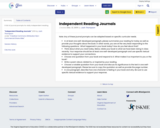
A list of journal prompts for daily independent reading
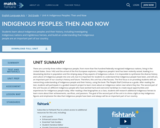
There are currently three million Indigenous people, from more than five hundred federally recognized Indigenous nations, living in the United States. Since 1492 and the arrival of the first European explorers, Indigenous people's land has been violently seized, leading to a devastating decline in population and the striping away of key aspects of Indigenous culture. It is impossible to synthesize the diverse history and culture of Indigenous people into one unit, but it is important for students to understand that Indigenous people have been, and still are, an important part of our country's history and future. Therefore, this unit has a few focuses. The first focus is on providing students with an overarching understanding of Indigenous people and their history, using the book The People Shall Continue as a guide. After reading the text, students will participate in a guided research project to learn more about an Indigenous nation near where they live. The second part of the unit focuses on different Indigenous people who have worked hard and overcome hardships to create equal opportunities and experiences for Indigenous people today. After reading a few biographies as a class, students will research additional Indigenous heroes to learn more about their achievements, sacrifices, and passions. The goal of the second part of the unit is to shine a light on key Indigenous figures and emphasize the idea that Indigenous people have been and always will be an important part of our country.
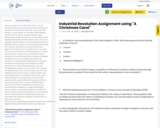
I show a version of "A Christmas Carol" to my AP European History class just before Winter Holiday as a preview of Time Period 3. 1815-1914. I favour the 1984 George C. Scott version, or the 1999 Patrick Stewart version, but any version would probably suffice.
Nobody does social commentary on the effects of the Industrial Revolution and the reforms that came after quite like Charles Dickens. And this assignment can be partially used as students are watching and also after the movie to call back to once direct instruction begins. It's proven to be a wonderful way to not only end school just before the Holiday break but to make connections to a major focus in European History.
GoOpenVA does not have AP Key Concepts available for alignment, so I have listed them below:
Key Concept 3.1IC Great Britain established its industrial dominance through the mechanization of textile production, iron and steel production, and new transportation systems in conjunction with uniquely favorable political and social climates.
Key Concept 3.2IIIB By the end of the century, higher wages, laws restricting the labor of children and women, social welfare programs, improved diet, and increased access to birth control affected the quality of life for the working class.
Key Concept 3.3IIIA,B,D Political revolutions and the complications resulting from industrialization triggered a range of ideological, governmental, and collective responses.
As with all movies, please double check with your administrators and/or media specialists regarding the playing of films within the classroom setting. The below link is a good rule of thumb:
http://www.ala.org/advocacy/sites/ala.org.advocacy/files/content/copyright/fairuse/web-digital%20delivery%20in%20classroomrev3psa.pdf

This is a self-paced review of input and output definitions and devices. Students will click on hyperlinks to check their understanding of input and output devices.
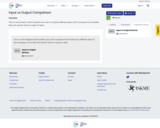
This is a document in which students can use to compare different parts of the computer as to weather they are used for input or output of data.
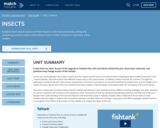
In this unit, second graders learn about insects and the impact insects have on the natural world. Building on what students learned in Unit 1 about habitats, they will explore how different insects rely on the environment, or habitat in which they live, for survival. Through this exploration, students will learn the unique characteristics of insects, how insects can be both beneficial and destructive, and the stages of an insect's life cycle. By the end of the unit, students will have a deeper understanding of and appreciation for the beauty of the insect world.
This unit is comprised of predominantly shared reading experiences to help students practice different reading strategies and skills. Building on unit one, students will continue to be inquisitive, active consumers of texts by asking and answering questions, and they will continue to deepen their understanding of the role text features and illustrations play in helping a reader better understand the content of a text. Students will also begin to explore the connections between scientific ideas and concepts using cause-and-effect language and will continue to strengthen their habits of discussion as they debate and analyze key ideas of the unit.
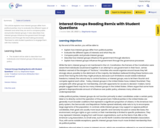
This article explains how interest groups differ from political parties, how to evaluate the different types of interests and what they do and to compare public and private interest groups. It also describes how interest groups influence the government through elections and through the lawmaking processes.
*Remixed to add student questions to engage them with the material.
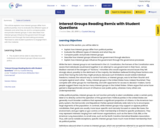
This article explains how interest groups differ from political parties, how to evaluate the different types of interests and what they do and to compare public and private interest groups. It also describes how interest groups influence the government through elections and through the lawmaking processes.
*Remixed to add student questions to engage them with the material.

This notesheet will allow students to learn about what internet protocol is and its components from 2 you tube videos. This should be used in conjunction with the internet protocols activity.

These are worksheets and coloring pages to support internet safety and digital citizenship learning in grades K-6.
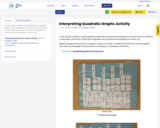
In this activity, students use the graphs of quadratic functions and equations to find the zeros or solutions, y-intercepts, and factors. There are 10 equations or functions for the students to match-up.

In this lesson, students will plan questions for an interview to find out how computing has impacted other job fields (outside of computer science).
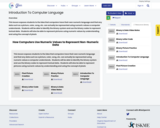
This lesson exposes students to the idea that computers have their own numeric language and that any data such as a picture, color, song, etc. can actually be represented using numeric values a computer understands. Students will be able to identify the binary system and use the binary codes to represent textual data. Students will also be able to represent pictures using numeric values by understanding and using the concept of pixels
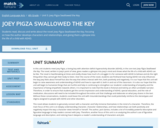
In this unit students meet Joey Pigza, a loving boy with attention deficit hyperactivity disorder (ADHD), in the core text Joey Pigza Swallowed the Key. The novel, written in Joey's point of view, gives readers a glimpse into Joey's mind and shows what the life of a child with ADHD can be like. The novel is heartbreaking at times and vividly shows how much of a struggle it is for someone with ADHD to behave and do the right thing when they cannot get their body to listen. Over the course of the novel, students see firsthand how having ADHD not only influences the way Joey feels about himself but also the way that others interact with him, both positively and negatively. It is our hope that this unit will begin to raise awareness and understanding of ADHD and how to cope with it, both in and out of the classroom. It is also our hope that this unit will begin to humanize things that are hurtful and help in continuing to strengthen our students' understanding of empathy and the importance of being empathetic towards others. It is important to note that this book is fictional and told by an often-unreliable narrator. Therefore, in order to ensure that students get the correct impression and understanding of ADHD, special education, and the role of medication, discussions will need to be included throughout the entire unit that challenge and elaborate on what Joey shares in the text. Without these conversations, students could leave the unit with misunderstandings that could potentially reinforce the stereotypes and stigma assigned to people with ADHD and other disorders.
This novel allows students to genuinely connect with a character and fully immerse themselves in the mind of a character. Therefore, the main focus of this unit is on deeply understanding character, character relationships, and how relationships can both positively and negatively impact the way a character views himself or herself. The author, Jack Gantos, includes a lot of incredibly powerful descriptive and figurative language to help readers connect with Joey. Therefore, another focus of this unit is on analyzing the author's use of figurative language and description, and noticing how it deepens a reader's understanding of characters and plot.
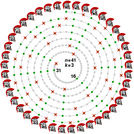
The Josephus problem is based around Josephus Flavius; a Jewish soldier and historian who inspired an interesting set of mathematical problems. This resource is a PDF activity based on the Josephus problem.

The Declaration of Independence and the words “all men are created equal” provided thousands of enslaved Africans high expectations and many were ready to fight for the Country and their own personal freedom. Thousands of enslaved Africans impacted the war right from the start at Lexington and Concord, all the way to the end at Yorktown. This lesson will explore the life of James Armistead Lafayette, an enslaved African Virginian. Working as an undercover spy for George Washington, James risked his life to gather key intelligence about the British that helped secure an American victory at Yorktown. In this lesson, we will discuss whether his efforts in service of the American cause helped or hindered his ability to achieve emancipation.

Before the 13th Amendment officially ended slavery in the United States, free and enslaved African Americans fought for their liberty, society’s recognition of their humanity, and the promise of equality. A variety of methods were used by enslaved African Americans to resist the conditions they experienced while in bondage. In this lesson plan, students will learn about three individuals whose actions are a representation of the bravery of African Americans who fought for their freedom and equality.

Authors: John Marshall Center for Constitutional History & CivicsSarah Waltman King, Richmond Public Schools In 1865, the ratification of the 13th Amendment officially ended slavery in the United States. After fighting for their liberty before and during the Civil War, enslaved African Americans saw their dreams of emancipation realized. In the years that followed the end of the war, Virginia and other southern states had to reconfigure their social, economic, and political systems during a period called Reconstruction. During this era, newly freed Black Virginians experienced advancements but also encountered barriers to achieving true equality. This lesson explores whether African Americans truly “free” following the passage of the 13th Amendment.Key Hook/QuestionWere African Americans truly free following the passage of the 13th Amendment?

John Marshall Center for Constitutional History & CivicsSarah Waltman King, Richmond Public Schools Throughout the four centuries of history covered in Determined, access to education was at the heart of the African American struggle for equality. While slavery was legal, enslaved Americans were prohibited by law from being taught to read and write, and had no access to formal education. Following emancipation and the 13th Amendment, Black Americans temporarily enjoyed increased access to education, but those rights quickly evaporated under new Jim Crow laws. Under those provisions, Virginia and other southern states established “separate but equal” schools that segregated students by race, which resulted in unequal conditions for Black and White children. Despite these setbacks, African Americans continued to aggressively pursue their right to an education.What academic challenges and successes did Mary S. Peake and Barbara Johns experience throughout their lives?